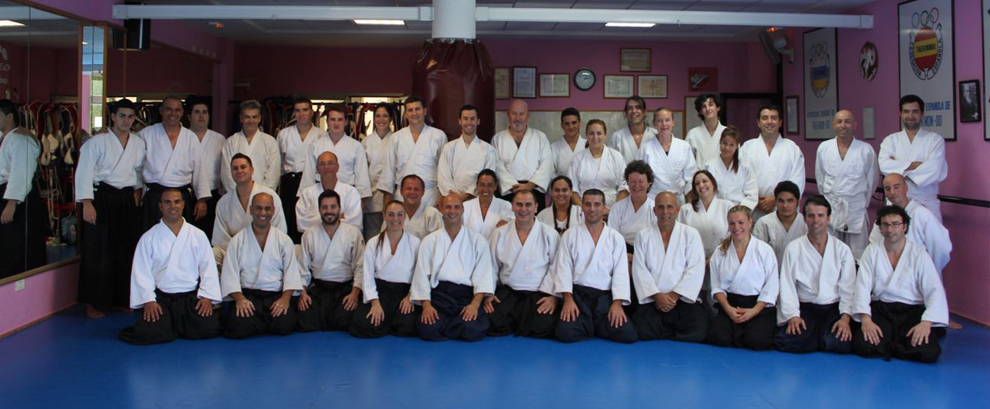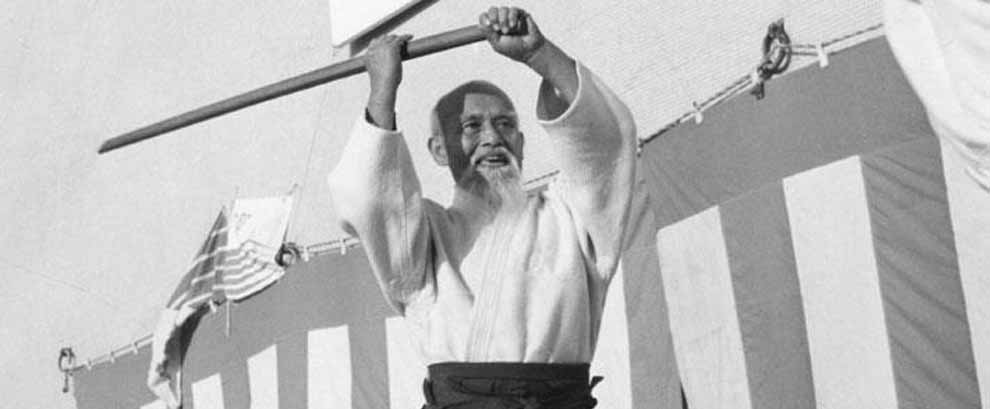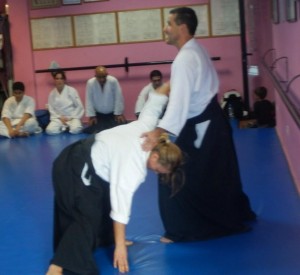The gesture, aiki technique is lived and experienced from both sides. The practitioner is, on experience, both Uke and Tori. It embodies the two figures on both sides of the coin, relief and the gap, balance and imbalance, Station "standing" and fall, driving and driven. Uke and Tori are the same. True, not really at the same time, but the man is an animal and memory footprint Uke Tori is still fresh when it projects to Uke, already being viewed as Tori ...
This alternation agreed – which is precisely the fact of practice and not what it supposedly simulates – definitely our best tool to help move along the path of unification defined "Ai". Uke and tori are the same, far surpassing simple status peers. And this awareness, as imposing, fits very closely the behavior and clearly illuminates the perspective, Aiki project. She says, indeed, that the general attitude and constant care are focused to strive to benefit the other both as himself, to work to a mutual and reciprocal elevation within practice. This will, constatémoslo, expresses nothing more than the ideal that aikido seeks to expand in all circumstances, dojo both practice and in the dojo of life.
Take care of your partner is taking care of yourself, done well and given the opportunity for a deeper understanding. Then, Uke Tori will massacre, and Uke will endeavor to create the most fruitful exchange situation. And it is here, in any case, of complacency, but rather, a requirement that has very specific effects on both welfare and the progression of each.
And for the requirement that Tori puts himself not control Uke through pain or injury forcing him to improve the comprehensiveness of its action and the management of the imbalance (fully evident on nikyo, sankyo, nage shihoo, Kote Gaeshi ... but also for absolutely all techniques). And it is also prohibited to use atemi as a sanction or to hide technical errors (but as a service tool designed to perceive distances and dangerous directions) will require permanent questioning for each shift. You try not surprise Uke accelerations through to the breaking point (but, instead, to lead him calmly until the fall) leading to hone listening and rhythm.
Here then are some very concrete examples of how the way in which participates Uke Tori respects not only the serenity of the exchange, but is also technical progress factor while physical fullness. And that's not all: This commitment to overcome all traumatic nature in practice is also what allows us to bring the most and not to "show it". And there is more than integrating this requirement not to be in any destroyer in the very conception of the technique can totally do it then wait, without it being truncated, without having to "simulate", without being betrayed or misrepresented in the dojo.
It will therefore be full and only the expression of herself, without needing to be a reference to an "otherwise" hypothetical and therefore unrealistic. This respect for the integrity of the companion as self, that goes hand in hand with the desire to give benefit, always taking it a little further away from your ability is a work on yourself as much as the other and thus helps us to avoid mistakes of enemy. This respect, this attention, should not be viewed as a waiver, a gesture of clemency (a kind of icing on the cake), which would be allowed only after getting their domination. It's much more than that: Understand that there can be only one solution winner / winner who is successful is the very engine of the attempted resolution of duality and opposition. This requirement, this restriction is the beginning, heart and purpose search.
And, to return to our experience of practicing, is striking to observe to what extent is the concrete implementation of this idea, materialized by alternating roles, which structure the relationship Uke / Tori and cover the reality of our practice, originality and, passing, the possibility to enjoy long.
And it, in much, by this conception, that creates unity in "school" and "life".
Franck Noël.
Translation José Maria Sevilleja
Fuente Facebook










Recent Comments